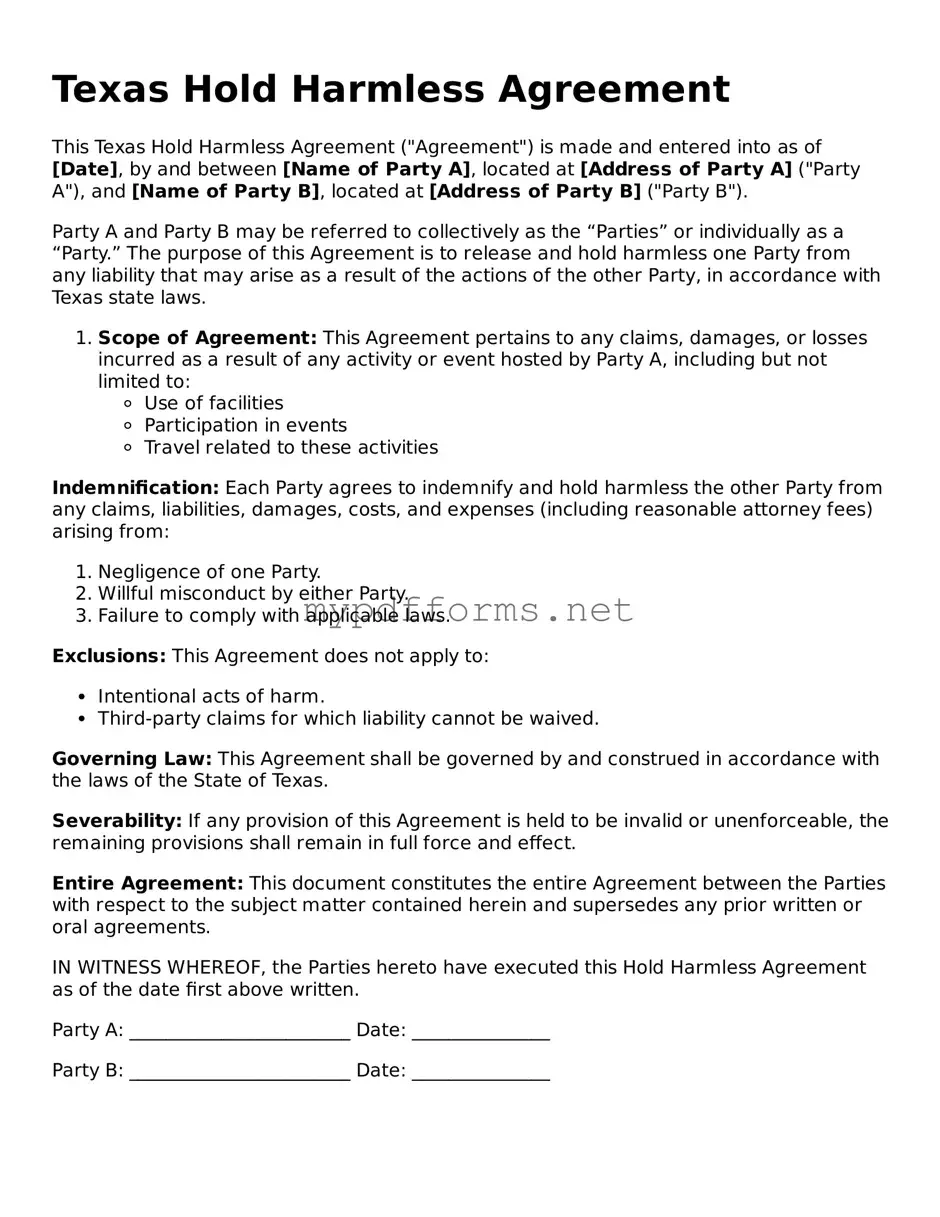A Waiver of Liability is a document that protects one party from legal claims resulting from injuries or damages. Similar to a Hold Harmless Agreement, it requires individuals to acknowledge risks associated with an activity and agree not to hold the other party responsible. This document is often used in sports, recreational activities, or events where participants might face potential hazards. By signing, participants accept the risks involved and relinquish their right to sue for any injuries that may occur.
A Release of Liability form also serves to protect one party from being held responsible for injuries or damages. This document is often utilized in situations where services or activities are provided, such as in gyms or during events. Like a Hold Harmless Agreement, it requires the participant to understand the risks and agree to release the service provider from any future claims. The focus here is on the voluntary assumption of risk, emphasizing that participants are aware of the dangers involved.
An Indemnity Agreement is closely related to a Hold Harmless Agreement, but it goes a step further. This document not only protects one party from liability but also requires one party to compensate the other for any losses or damages incurred. It’s often used in contracts where one party agrees to take on the financial responsibility for certain risks. This can be particularly important in business transactions where one party may be exposed to potential lawsuits due to the actions of another.
A Liability Insurance Policy is a contract between an individual or business and an insurance company. It provides financial protection against claims resulting from injuries or damages. While it does not directly prevent liability like a Hold Harmless Agreement, it serves a similar purpose by offering a safety net. In the event of a claim, the insurance policy can cover legal fees and settlements, allowing the insured party to manage risks more effectively.
When considering the necessary documentation for managing legal and financial affairs, referring to the comprehensive General Power of Attorney guidelines is essential. This will provide you with valuable insights on how to effectively grant authority to your chosen agent.
A Consent Form is often used in medical or research settings to ensure that participants understand the procedures and risks involved. Like a Hold Harmless Agreement, it requires individuals to acknowledge potential dangers. However, a Consent Form primarily focuses on informing participants and obtaining their permission before proceeding, rather than absolving another party of liability. It is a crucial step in ensuring that individuals are aware of what they are agreeing to.
An Agreement to Arbitrate is a document that outlines how disputes will be resolved outside of court. While it does not directly address liability, it shares similarities with a Hold Harmless Agreement in that it aims to limit exposure to legal claims. By agreeing to arbitration, parties can avoid lengthy court processes and settle disputes more efficiently. This can be beneficial in maintaining relationships and reducing costs associated with litigation.
A Non-Disclosure Agreement (NDA) protects confidential information between parties. Although it primarily focuses on information sharing, it can be similar to a Hold Harmless Agreement in that it limits the liability of one party regarding the misuse of information. By signing an NDA, individuals agree to keep sensitive information private, which can protect against potential legal claims stemming from breaches of confidentiality.
A Service Agreement outlines the terms and conditions under which services are provided. While it primarily focuses on the responsibilities of each party, it can include clauses that limit liability. Similar to a Hold Harmless Agreement, it ensures that both parties understand their obligations and the risks involved. This helps prevent misunderstandings and potential legal issues that may arise during the service relationship.
A Property Damage Waiver is a document that releases one party from liability for damages to property. This is particularly relevant in rental agreements or during events where property may be at risk. Like a Hold Harmless Agreement, it requires individuals to accept responsibility for any potential damages and agree not to hold the other party liable. This helps clarify expectations and protect against disputes related to property damage.
